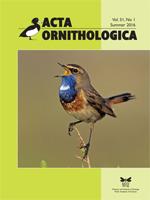The rate of telomere loss is increasingly being used as a marker of biological aging, organismal senescence, and survival probability. These protective ends of chromosomes act to protect coding DNA during replication and by buffering against degradation from reactive oxygen species (ROS). In many organisms, telomere loss has been linked to increased levels of metabolism, biological stress and disease. Here we validate a medium-throughput and reliable method to measure relative telomere length in Sand Martins Riparia riparia. We performed the qPCR assay on a population of variously aged individuals from eastern Hungary. We detected a significant negative relationship between relative telomere length and age and observed a clear drop in telomere length in older age classes (> 4 years) but no relationship with gender or body mass. Our results in this cross-sectional study support findings in other passerine species that report a lack of long telomeres in older individuals. The method that we describe will allow longitudinal studies of Sand Martin individuals in wild populations to track telomere dynamics related to various life history characteristics and individual health.
How to translate text using browser tools
1 June 2016
A Simple and Reliable Medium-Throughput Method to Measure Relative Telomere Length in Sand Martins Riparia riparia
Steve Smith,
Richard H. Wagner,
Tibor Szép,
Franz Hoelzl,
Mónika Molnár
ACCESS THE FULL ARTICLE
<
Previous Article
|

Acta Ornithologica
Vol. 51 • No. 1
June 2016
Vol. 51 • No. 1
June 2016
age
qPCR
Riparia riparia
senescence
telomeres




